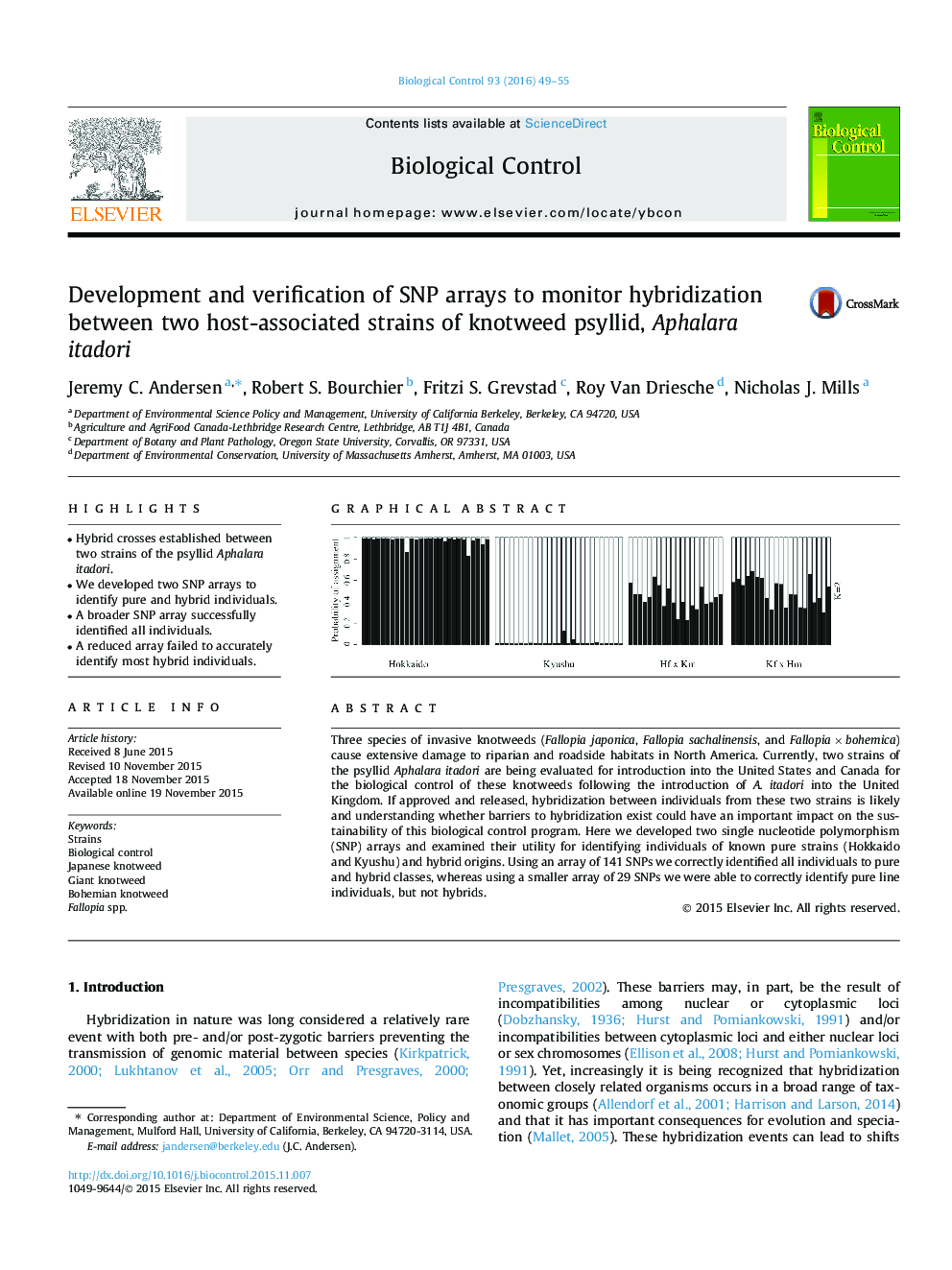| Article ID | Journal | Published Year | Pages | File Type |
|---|---|---|---|---|
| 4503653 | Biological Control | 2016 | 7 Pages |
•Hybrid crosses established between two strains of the psyllid Aphalara itadori.•We developed two SNP arrays to identify pure and hybrid individuals.•A broader SNP array successfully identified all individuals.•A reduced array failed to accurately identify most hybrid individuals.
Three species of invasive knotweeds (Fallopia japonica, Fallopia sachalinensis, and Fallopia × bohemica) cause extensive damage to riparian and roadside habitats in North America. Currently, two strains of the psyllid Aphalara itadori are being evaluated for introduction into the United States and Canada for the biological control of these knotweeds following the introduction of A. itadori into the United Kingdom. If approved and released, hybridization between individuals from these two strains is likely and understanding whether barriers to hybridization exist could have an important impact on the sustainability of this biological control program. Here we developed two single nucleotide polymorphism (SNP) arrays and examined their utility for identifying individuals of known pure strains (Hokkaido and Kyushu) and hybrid origins. Using an array of 141 SNPs we correctly identified all individuals to pure and hybrid classes, whereas using a smaller array of 29 SNPs we were able to correctly identify pure line individuals, but not hybrids.
Graphical abstractFigure optionsDownload full-size imageDownload as PowerPoint slide
